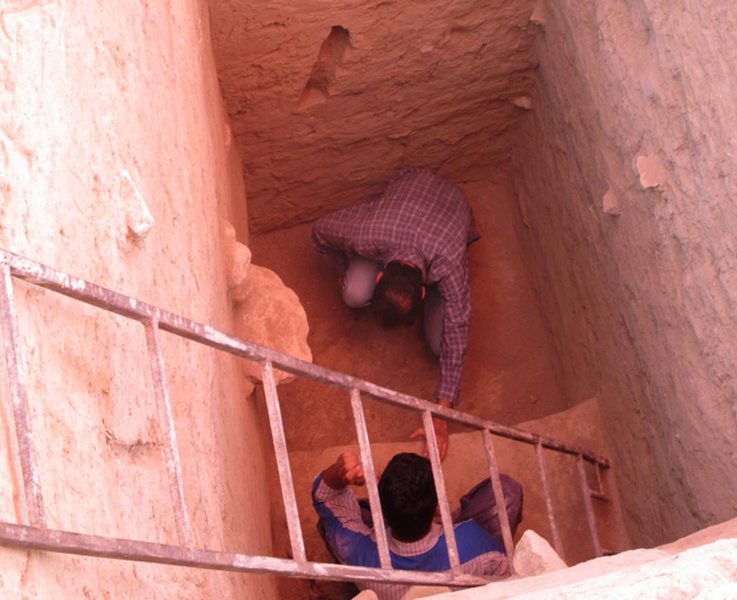
The Public Relations Office of the Research Institute of Cultural Heritage and Tourism (RICHT) quoted Alireza Askari Chaverdi, head of the archeology team in Talle Porgou (Porgou Mound) in Hormuzgan Province, as saying on that archeological explorations were conducted with an aim of identifying the periods of settlement in the ancient sites of the city of Parsian in the province.
As the primary target of the plan he referred to the recognition of the ancient cultures in an area between east of Siraf, Assalouyeh and the ancient cultures of Parsian region and establishment of a reliable chronological base in the Persian Gulf coast.
According to the archaeologist, with the identification of 16 stages of settlement in the course of explorations in eight meters of ancient remains in one of the sites of Talle Porgou in Bambari village near the city of Parsian (Gaabandi), it became clear that the precise stratigraphy of the area could provide a good basis for comparing the chronology of the ancient works of the entire ancient coastal sites of Siraf, Parsian, Charak, Lengeh, Kish, and even the cities of Lamerd and Mohr.
Referring to the identification of more than one hundred and fifty ancient sites in the two coastal plains from the east of the port of Siraf to Bandar Lengeh and in the two hinterland plains of Lamerd and Mohr during the previous explorations, he said the choice of a site with the method of selection and concentration on stratigraphy required the selection of an appropriate archaeological site in order to give an answer to chronological questions for comparing the surface works of the entire area in western Hormuzgan coastal area and in the south of Fars.
Askari Chaverdi said the reason for the selection of Talle Porgou area was the accumulation of a large volume of ancient materials in an area, adding that the explorations were conducted based on the new stratigraphy methods and in the early stages of the study it became clear that settlement in the Parsian region was practiced in the Sassanid era in eight consecutive steps.
“In fact, the successive and intensive processes of habitation in a region are indicative of the favorable environmental conditions for living which was best implemented in the Sassanid period in the Parsian region through management of agricultural systems and water resources,' he added.
According to Askari Chaverdi, in fact, the skill and experience in the management of water resources on the coasts of the Persian Gulf led not only to the massive growth of agriculture and crop in the Sassanid era, but due to the efficiency and management ability in maximum use of the resources, the name of this area has been taken from the traditional cultivation practices in ancient Iran.
In fact, he further remarked, the name Govbandi is a kind of distribution of product between the land owner and the farmer based on the share of water, labor and land which was used in Iran in the traditional methods of farming and in the ancient agricultural tradition in Iran it was called Gaaband or Govbandi.
The archaeologist added that archaeological research works in the eight ancient sites in the Persian Gulf hinterland revealed an ancient city belonging to the Ancient Persia which can be the ancient Govbandi.
He said not only the areas brought under survey are very significant in terms of archeology, but preservation of the name of an ancient irrigation system in the name of a coastal city of the Persian Gulf is important as with the registration of the name Govbandi or Gaabandi in the list of spiritual heritage of the country this kind of irrigation and farming system can be protected as another achievement of the art, culture and ancient civilization of the Iranians.
9376**2050
Follow us on Twitter @IrnaEnglish
 solhkhabar | Peace International News Agency Peace International News Agency , Peace News , International Agency News of Peace
solhkhabar | Peace International News Agency Peace International News Agency , Peace News , International Agency News of Peace